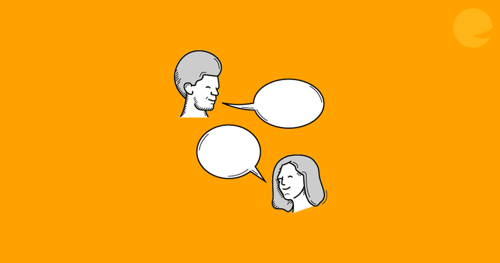
Facilitating Mental Health Awareness Sessions
Creating a relaxed and safe space to talk openly about mental health at work is important. Volunteer Sharon talks about developing and facilitating mental health awareness sessions in workplaces.
My journey with See Me started after I trained as a Mental Health & Suicide First Aider in 2016.
Although my office signed up to the See Me Workplace Programme, there wasn’t much progress with our action plan to reduce stigma and discrimination of mental health issues in the office. I am very passionate about making a difference in helping people talk more openly about mental health, good or bad.

I decided to step up to develop and facilitate mental health awareness sessions in various formats. To help me with this process, I attended a facilitators session for the See Me e-learning package. That coupled with my skills and experience as a qualified trainer helped me formulate a very successful awareness package.
In September 2016 I organised my first sessions, which included showing two of the See Me e-learning dramas. From this point forward I have adjusted and improved my sessions based on feedback from staff. As I said earlier, I facilitate sessions in various formats, for example; Bun n’ Bleather, Time to Talk Day, Awareness for Staff, Awareness for Managers, and TED talks.
The See Me e-learning drama I most heavily rely on during my sessions, is the one about a group of workers badmouthing a colleague who has left work early due to mental health issues. This drama really hits home about language used by those who don’t understand what it feels like to have a mental health problem. This particular drama creates a lot of animated conversations and is fundamental in changing the culture within organisations.
So what do I see as the recipe for success of my mental health awareness sessions?
- Ingredient 1
Is sharing my own mental health story, which spans a period of more than 20 years.
- Ingredient 2
Is showing at least two See Me e-learning dramas and facilitating healthy debate on what we see and how we feel about it.
- Ingredient 3
Is splitting attendees into small groups and asking them to create a list of mental health conditions that they are aware of, plus also listing what the signs and symptoms are of depression, anxiety and stress.
- Ingredient 4
Also involves group work to discuss case studies that I have created for this.
- Ingredient 5
Is creating a relaxed and safe space to talk confidentially and openly about mental health.
Since September 2016 I have delivered 64 mental health sessions with 740 staff attending across the HM Passport Office estate in the UK, and this is the typical feedback I receive:
“It was a brilliant session, very relaxed atmosphere.”
“Very informative and helpful.”
“Really great, thoroughly enjoyed it.”
“A good well-presented session.”
“Sharon’s approach to all things mental health is refreshing.”
“Got everyone in the room talking.”
“The value of the session is beyond measurable.”
“Personal experience invaluable for understanding.”
“Amazing.”
“Well presented and very well thought out.”
“I know I can’t fix things but I can listen and I can ask ‘Are you okay?’.”
